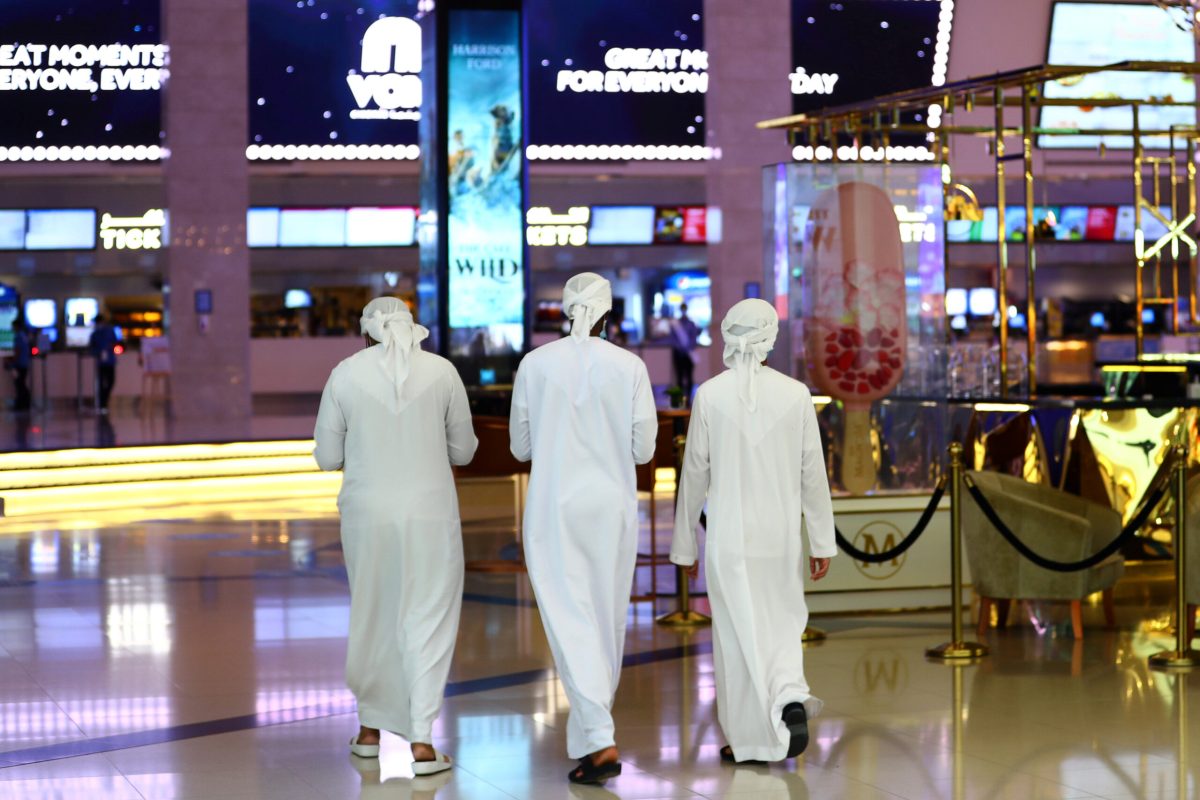
Monetary and fiscal policies must be well coordinated to achieve the best results for economies – whether to rein in inflation or support economic activity. This is of crucial importance for the Gulf Arab states, as their monetary policies are mostly dictated by the U.S. Federal Reserve due to their currencies being pegged to the U.S. dollar. This means that Gulf monetary authorities must follow the Federal Reserve regarding interest rates. If both the United States and Gulf states need a similar change in interest rates (e.g., rate cuts to boost economic growth), Gulf states need an expansionary fiscal policy to complement the monetary policy. And in case of a mismatch between business cycles (e.g., the Gulf states need to decrease interest rates while the United States is raising them), the Gulf states need to compensate for the negative impact of high interest rates with an even more expansionary fiscal policy. In both cases, a fiscal space is necessary in the Gulf states, i.e., accumulating savings in good times that allow the government to spend more in difficult times. In other words, a fiscal space is a precondition to conduct effective “countercyclical” fiscal policy, i.e., adopting measures to counteract the effects of the economic cycle, such as increasing government spending or cutting taxes when the economy is slowing down. Instead, the Gulf states, and many other emerging economies, have maintained traditional procyclical policies – those that magnify the fluctuations in the economic cycle.
Procyclicality of Fiscal Policy
Economists widely advise against procyclical fiscal policies. Nonetheless, evidence suggests many countries, especially emerging economies, commonly undertake such policies. For example, during an economic expansion, governments tend to increase spending and reduce taxes instead of saving the extra revenue. The most plausible explanation for this is related to political economy. Pressure from interest groups to spend more following a recession may be too high to resist, spurring increased public spending, even if it leads to economic overheating and inflation. More important, higher spending following an economic expansion prevents the accumulation of savings to build a fiscal space that can be used in a recession. A recent International Monetary Fund study showed that in developing economies, government fiscal measures tend to be either a-cyclical (no attempt to affect the economic cycle) or procyclical (aggravating the economic cycle instead of countering it). This vicious cycle may be compounded in these economies by procyclical capital flows, as access to international capital markets improves when economies get better ratings in periods of economic growth, and vice versa.
Fiscal Reforms in the Gulf Arab States
A November 2022 IMF study highlighted the predominance of procyclicality in the Gulf Cooperation Council states: “Throughout its history, the GCC region has experienced distinct periods of rising oil revenues. During those periods, countries deepened their dependency on oil and gas, increased wages and hirings in the public sector, expanded social safety nets, and ramped up capital expenditure. During 2002-08 and 2010-14 for example, the public sector wage bill increased by 51 and 40 percent, respectively.” To counter this fiscal policy procyclicality, the IMF recommended the GCC states adopt fiscal reforms with the aim of moving toward countercyclical policies. The Gulf states have taken only limited actions in this regard, as only Oman and Saudi Arabia adopted medium-term fiscal programs, a crucial step toward countercyclicality.
A fiscal program started in 2018 to achieve a balanced budget in 2022. The revised plan in 2020 included expenditure rationalization, revenue mobilization, cash subsidies to citizens, and increasing the value-added tax rate to 10%.
A rule of transferring 10% of government revenue, excluding investment income, to the Future Generations Fund allowed for the accommodation of important financial buffers. Fiscal policy remained procyclical, however.
A 2022-24 budget framework was adopted for expenditure-based fiscal consolidation. The IMF recommended accelerating the implementation of the VAT, spending efficiency, economic diversification, and green investment.
The Medium-Term Fiscal Plan was launched in 2020 to achieve fiscal balance, including a 5% VAT and a disconnect of spending from oil price volatility.
A Medium-Term Fiscal Sustainability Program is in place. IMF staff recommended 1.5%-2% annual increase in spending, independent of oil prices.
IMF staff recommended a rules-based UAE-wide fiscal framework, achieving coordination among the emirates.
Moreover, in response to the significant fall in hydrocarbon prices in mid-2014, only Bahrain, Qatar, and the UAE managed to increase public spending from 2013-16. Over the same period, expenditure fell by 5.2% in both Kuwait and Oman and 13.5% in Saudi Arabia, further reducing liquidity in their economies at an inopportune time. And when the coronavirus pandemic struck in 2020, instead of countering the exogenous shock by increasing spending, public expenditure fell in Qatar (-12.5%), the UAE (-8.5%), Bahrain (-1.9%), Kuwait (-1.6%), and Oman (-1.0%). Saudi Arabia was the only Gulf Cooperation Council state to increase public expenditure. As a result, the Saudi economy witnessed the lowest real (inflation-adjusted) decrease in nonhydrocarbon gross domestic product in 2020 (-2.3%), compared to Kuwait (-7.5%), the UAE (-6.2%), Bahrain (-5.5%), Qatar (-4.5%), and Oman (-3.9%).
Why did the Gulf Arab states fail to reform and graduate to countercyclical fiscal policies? Again, political economy factors may be an explanation, with a large increase in public expenditure in response to interest groups’ pressure leaving little fiscal space for downturns. Yet this collective action in favor of procyclicality also exists in other resource-rich economies, such as Chile and Norway, but that hasn’t prevented them from adopting countercyclical fiscal policies. Indeed, these examples can help the Gulf Arab states design a successful framework to transition to countercyclical policies. Other obstacles include the lack of technical capacity to effectively adopt countercyclical policies and that sovereign wealth funds in these countries were not established for stabilization purposes.
The Prerequisites to Countercyclical Policies
The main prerequisites for a countercyclical framework are an official commitment to adopting countercyclical fiscal policies; capacity building in fiscal data and research; and the creation of a stabilization fund to be activated in case of unexpected and persistent fall in government revenue.
First, it is important to increase awareness about the long-run benefits of countercyclical fiscal policies and make a credible commitment to adopt countercyclical policies. Second, the Gulf Arab states will have to improve statistics and research to prepare for contingency planning, identify periods that require specific countercyclical interventions, and estimate the lag in the economy’s response to policy changes, the size of the fiscal multipliers, and more. These actions will provide the financial authorities with the necessary technical capabilities. Third, a proportion of oil and natural gas receipts should be earmarked for a stabilization fund with sufficient liquidity to ensure it can be used during downturns, thereby insulating the local economy from the volatility of international markets.
The Gulf states undoubtedly have sufficient fiscal space thanks to their sovereign wealth funds. In most cases, however, the fiscal space may not be available for immediate use when needed. In the UAE, the Abu Dhabi Investment Fund, with about $1 trillion in assets, is the property of the local authorities, so the federal government is unable to access it. And in Kuwait, the absence of a public debt law prevents the government from borrowing from the Future Generations Fund, whose assets may not be liquid enough to be used when needed. In 2020, for example, the assets of Kuwait’s General Reserve Fund, both a treasury account and a stabilization fund, neared depletion, requiring the government to swap the General Reserve Fund’s liquid assets for the Future Generations Fund’s illiquid assets, a complicated and time-consuming process. A better alternative for Kuwait and other Gulf states is to set up stabilization funds with enough resources invested in liquid assets that can be immediately used in times of need.
Finally, efficient fiscal policy implementation requires continuous assessment, monitoring, and oversight, which is the role of fiscal councils. More than 50 countries have already established fiscal councils, including emerging economies, such as Vietnam, and less developed economies, such as Uganda and Kenya. Fiscal councils may help the Gulf states in their transition to countercyclical policies. Such councils can refer to some benchmarks, such as Chile’s Autonomous Fiscal Council, which is credited for enhancing the effectiveness and transparency of the country’s fiscal framework.
Putting the Pieces Together
Given the volatility of hydrocarbon prices and other external shocks, Gulf Arab states can benefit from following the path of advanced economies (and some emerging economies) and adopting countercyclical fiscal policies. To do so, they should work toward the prerequisites outlined above and establish fiscal councils for monitoring and oversight. This bold yet necessary shift will limit fallback during economic downturns, thereby securing the needed resources to support spending on vital public services and pro-growth infrastructure during recessions.





